Trees Birds Mammals Fish Amphibians Reptiles
Wild Algarve
Bookshop
Campanula trachelium - Nettle-leaved Bellflower
Phylum: Magnoliophyta - Class: Equisetopsida - Order: Asterales - Family: Campanulaceae
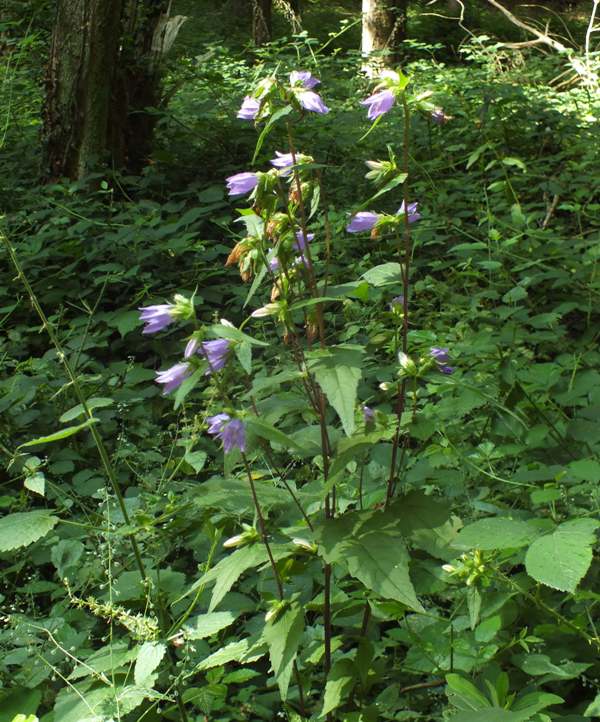
This lovely summer wildflower is also known as Bats-in-the-Belfry and as Throatwort.
Description
The common name of this upright perennial plant is most apt, because the serrated heart-shaped leaves are very similar in shape to those of Stinging Nettles (but a paler shade of green). Plants grow to a height of 60 to 100cm and have unbranched square hairy stems topped by a one-sided lax spike of bell-shaped flowers. The individual flowers have five fused petals forming a long drooping bell with a very hairy inner surface.
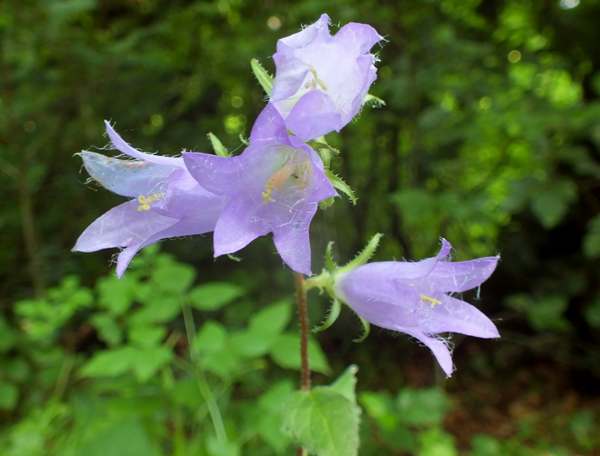
The bells are typically 3cm across and are usually blue-violet, but they can occasionally be white.
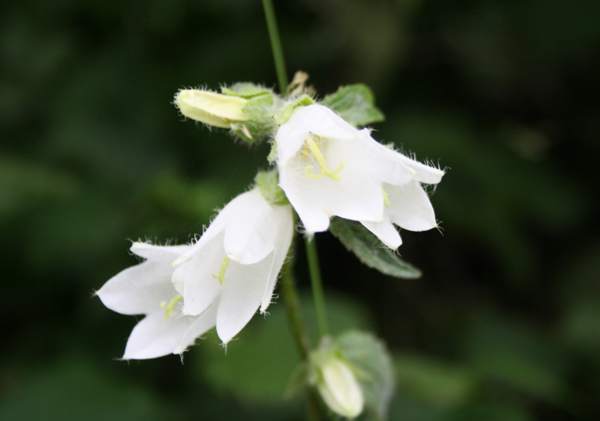
Distribution
Nettle-leaved Bellflower is native to Britain but a scare to rare sight there except for in the south and east; its decline may be largely due to the degradation of its preferred habitat, and in particular to the destruction of so many old hedgerows. On mainland Europe this wildflower is still common in many parts of France; it is also recorded in Denmark and occasionally as far north as central Finland. To the east the geographical range of Campanula trachelium extends through much of Asia into Siberia.
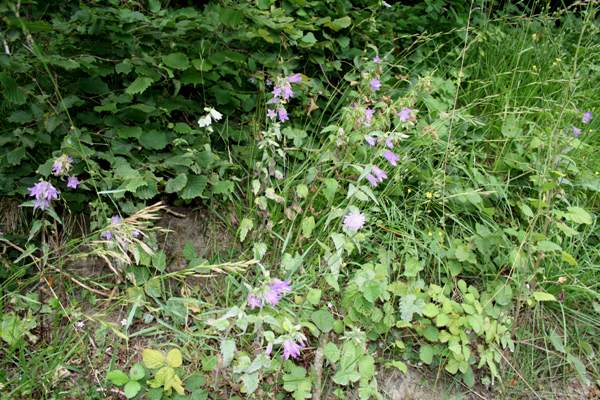
Habitat
Campanula trachelium favours alkaline soil; it copes well with the shady conditions on woodland edges and beneath unmanaged hedgerows. We have seen it also on canal banks and sheltering beneath sheer cliffs in quarries in North Wales.
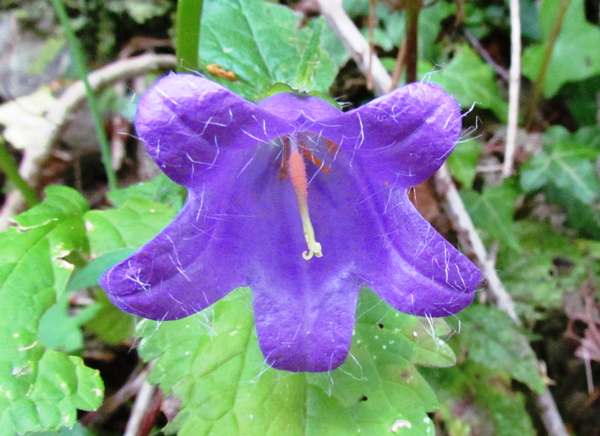
Flowering Times
In Britain and northern mainland Europe these lovely bellflowers are usually at their best in June and July, but in well shaded spots they can persist well into August.
Etymology
The specific epithet trachelium reflects an ancient belief that Nettle-leaved Bellflower had properties that could cure sore throats (pain in the trachea, or windpipe).
Acknowledgements
This page includes pictures kindly contributed by Simon Harding.
Sue Parker's latest ebook is a revised and enlarged edition of Wild Orchids in The Burren. Full details here...
Buy it for just £5.95 on Amazon...
Sue Parker's new ebook is a comprehensive and fully revised edition of her acclaimed field guide to the Wild Orchids of Wales. Full details here...
Buy it for just £5.95 on Amazon...
Please Help Us: If you have found this information interesting and useful, please consider helping to keep First Nature online by making a small donation towards the web hosting and internet costs.
Any donations over and above the essential running costs will help support the conservation work of Plantlife, the Rivers Trust and charitable botanic gardens - as do author royalties and publisher proceeds from books by Pat and Sue.